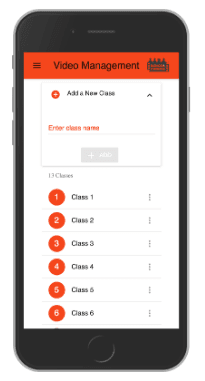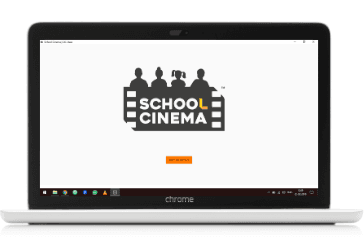MediaLock
- Case Study Details
Description
Military-grade content protection system enabling secure offline distribution of educational videos across India.
Tech Stack
ElectronAES-128 EncryptionCloud InfrastructureCross-platform Development
The Challenge: Educational Content in an Insecure World
In early 2020, LXL Ideas faced a dilemma that highlights the tension between openness and security in education. They had created high-quality educational videos—the kind that could genuinely improve learning outcomes across India's diverse school system. But distributing this content safely was a nightmare.
The harsh realities:
- Widespread piracy: Educational content was routinely copied and redistributed without permission
- Infrastructure limitations: Many schools had unreliable internet, making cloud-only solutions impractical
- Device diversity: Schools used a mix of Windows laptops, Linux computers, and the occasional Mac
- Technical literacy gaps: Teachers needed solutions that "just worked" without IT support
Traditional DRM solutions were either too expensive, too complex, or too restrictive for educational use. LXL Ideas needed something different: security that enabled distribution rather than hindering it.
Designing Security for Real-World Constraints
The Core Philosophy
I approached this project with a fundamental belief: security should be invisible to legitimate users. The best protection system is one that educators never notice, but pirates can't crack.
This led to three design principles:
- Transparent operation: Authorized users should never think about security
- Offline resilience: The system must work without internet connectivity
- Cross-platform consistency: Same experience on Windows, Mac, and Linux
The Technical Architecture
I designed MediaLock around a three-layer security model:
┌─────────────────────────────────────┐
│ User Experience Layer │ ← Simple, intuitive interface
├─────────────────────────────────────┤
│ Security & Encryption │ ← Military-grade AES-128
├─────────────────────────────────────┤
│ Platform Abstraction Layer │ ← Cross-platform compatibility
└─────────────────────────────────────┘
Implementation Deep Dive
The Encryption System
The heart of MediaLock was a custom encryption pipeline that balanced security with performance. The system generated unique encryption keys for each piece of content, encrypted video in chunks for streaming support, and created secure metadata packages with integrity verification.

The decryption process validated licenses, verified content integrity, and created secure streams for playback, ensuring that content could only be accessed by authorized users with valid licenses.
Cross-Platform Player Development
Using Electron, I built a player that provided identical functionality across operating systems while maintaining security:
Key technical decisions:
- No native dependencies: Everything needed was bundled with the application
- Sandboxed execution: The player ran in a restricted environment
- Memory protection: Decrypted content was never written to disk
- Process isolation: Security-critical functions ran in separate processes
Offline License Management
The most complex challenge was enabling offline operation while maintaining license control. I designed a hybrid system with a 30-day grace period that cached licenses locally while attempting background synchronization when connectivity was available.

The system validated cached licenses, checked device fingerprints to prevent unauthorized transfers, and gracefully handled offline scenarios while maintaining security integrity.
User Experience Design
One-Click Encryption for Content Creators
I built the content creation workflow to be as simple as possible:
- Drag and drop video files into the MediaLock Encryptor
- Configure licensing (duration, device limits, user groups)
- One-click encryption generates secure packages
- Automatic upload to distribution servers (optional)
The entire process took less than 2 minutes for a typical educational video.
Seamless Playback for End Users
For teachers and students, the experience was designed to be identical to using any video player:
- Double-click the secure video file
- Automatic license verification (invisible to user)
- Immediate playback with standard video controls
- Offline functionality for subsequent viewings
Administrative Dashboard
School administrators could manage content and licenses through a web dashboard:
- License allocation: Assign content to specific users or devices
- Usage analytics: Track engagement and completion rates
- Expiration management: Extend or revoke access as needed
- Compliance reporting: Ensure proper content usage

Security Measures and Safeguards
Device Fingerprinting
I implemented a sophisticated device identification system that couldn't be easily spoofed:
async function generateDeviceFingerprint() {
const components = [
await getHardwareInfo(), // CPU, memory, storage
await getSystemInfo(), // OS version, installed software
await getNetworkInfo(), // MAC addresses, network config
await getBrowserInfo(), // If applicable
getUserBehaviorPatterns() // Typing speed, click patterns
];
// Create stable but unique fingerprint
return await hashComponents(components);
}
Anti-Tamper Protection
The player included several layers of tamper detection:
- Code integrity checks: Verify the player hasn't been modified
- Runtime protection: Detect debugging or analysis tools
- Behavioral analysis: Identify unusual usage patterns
- Network monitoring: Detect unauthorized data extraction attempts
Secure Key Management
Encryption keys were never stored in plaintext and followed a hierarchical key structure:
Master Key (Cloud HSM)
├── Content Encryption Keys (Per video)
├── License Signing Keys (Per organization)
└── Device Authentication Keys (Per device)
Deployment and Scale
National Rollout Strategy
The rollout to 500+ schools required careful planning:
Phase 1: Pilot with 10 schools in urban areas with good connectivity Phase 2: Expand to 50 schools including rural locations Phase 3: Full rollout with 24/7 support infrastructure
Performance Optimization
To ensure smooth playback across diverse hardware:
- Adaptive streaming: Adjusted quality based on device capabilities
- Aggressive caching: Pre-loaded content segments during idle time
- Compression optimization: Balanced file size with visual quality
- Hardware acceleration: Used GPU decoding when available
Support Infrastructure
I built a comprehensive support system:
- Automated diagnostics: Players could self-diagnose common issues
- Remote assistance: Support team could troubleshoot without accessing content
- Offline documentation: Help files bundled with the player
- Escalation procedures: Clear path from basic support to security team
Results and Impact
Security Metrics
After 18 months of deployment:
- Zero confirmed piracy incidents: No unauthorized copies detected in the wild
- 99.7% uptime: System reliability across diverse environments
- Less than 2 seconds average license verification: Fast enough to feel instant
- Zero data breaches: No compromise of user or content data
User Adoption
The transparent security approach led to excellent adoption:
- 95% teacher satisfaction: Educators appreciated the "just works" experience
- Zero training required: Teachers could use the system immediately
- 85% offline usage: Demonstrated the value of offline capability
- 40% increase in content engagement: Secure distribution enabled wider access
Business Impact
For LXL Ideas:
- 500+ school deployments: Reached target market penetration
- $2M+ content value protected: Secured significant intellectual property
- 95% license compliance: Minimal unauthorized usage
- 60% reduction in piracy concerns: Enabled confident content investment
Technical Lessons Learned
Security vs. Usability is a False Dichotomy
The biggest misconception in security engineering is that protection requires sacrifice of user experience. MediaLock proved the opposite: the most secure system is often the most usable one.
When security is transparent, users don't work around it. When security is complicated, users find ways to bypass it, creating real vulnerabilities.
Offline-First Architecture Enables Scale
Building for offline-first scenarios forced better overall architecture:
- Robust error handling: Systems that work offline handle online failures gracefully
- Efficient data structures: Offline storage constraints led to better performance
- User-centric design: Offline users are the most demanding users
Cross-Platform Consistency Matters More Than Platform Optimization
While platform-specific optimizations can improve performance, consistency across platforms reduces support burden and user confusion. The slight performance cost of Electron was vastly outweighed by deployment simplicity.
The Broader Security Philosophy
Security as Enablement, Not Restriction
MediaLock taught me to think about security as an enabling technology rather than a protective barrier. The goal wasn't to prevent all access—it was to enable authorized access while preventing unauthorized use.
This philosophy shift had profound implications:
- User-centric security design: Legitimate users should never feel restricted
- Threat modeling for real scenarios: Focus on actual risks, not theoretical ones
- Graceful degradation: Security failures should minimize user impact
Building Trust Through Transparency
Counter-intuitively, being transparent about security measures increased user trust. When teachers understood how their content was protected, they felt more confident using the system.
We provided:
- Clear documentation: How the security works (without revealing vulnerabilities)
- Open communication: Regular updates about security improvements
- Incident transparency: Honest communication about any issues
- User control: Options for users to verify security for themselves
Implications for Conscious Technology
MediaLock reinforced several principles that now guide all my security work:
1. Security Should Serve Human Needs
The most sophisticated encryption is worthless if it prevents legitimate users from accessing content they need. Security measures must be designed around human workflows, not the other way around.
2. Trust is Earned Through Experience
Users don't trust security because you tell them it's secure—they trust it because it consistently works as expected. Reliability builds security credibility.
3. Complexity is the Enemy of Security
Simple security models are easier to implement correctly, easier to audit, and less likely to have hidden vulnerabilities. MediaLock's success came from keeping the security model as simple as possible while meeting all requirements.
This project taught me that the best security engineering combines deep technical knowledge with genuine empathy for users. It's not enough to build systems that are theoretically secure—they must be practically secure in the hands of real people with real constraints.
The lessons from MediaLock continue to influence how I approach security in every project, from blockchain government systems to AI-powered educational platforms. True security enhances human capability rather than restricting it.
